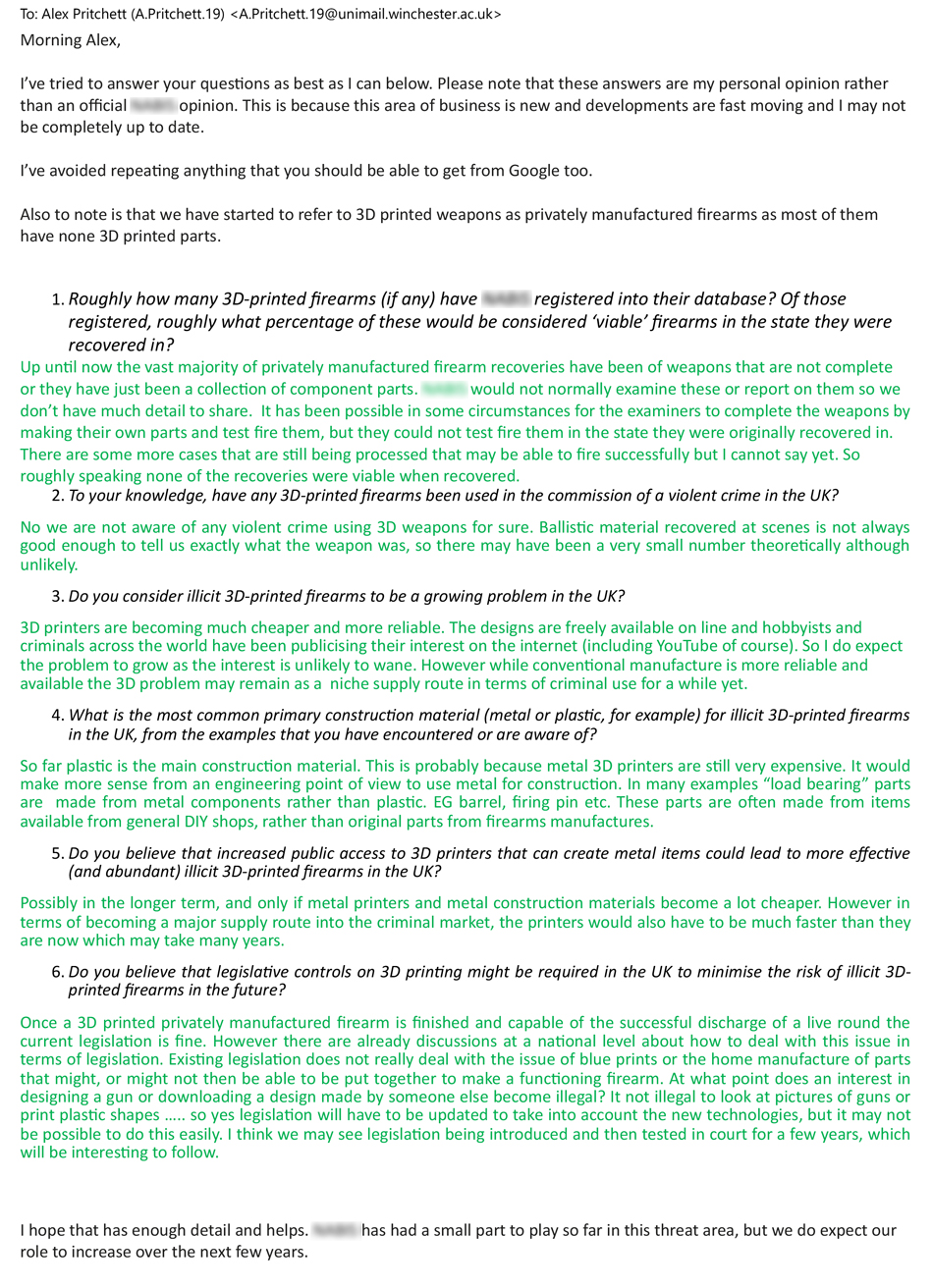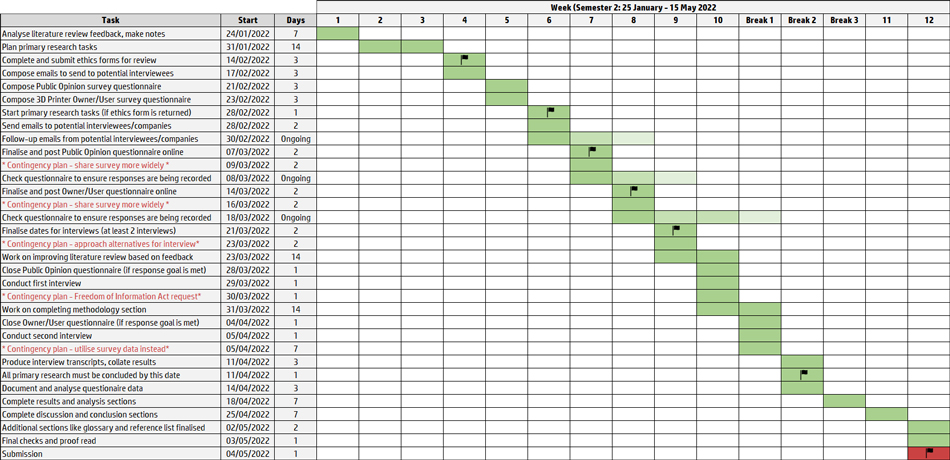Major Research Project (Semester Two)
As covered on the previous page, we completed roughly a quarter of our dissertations in Semester One. Although it was good to get a large chunk of the work out of the way, this did leave roughly 75% of the paper remaining which had to be completed in a similar time frame to the previous 25%. As such, effective management of time was more important than ever, especially in relation to other modules. Complicating matters, I had was working on two NLT projects at once, in addition to the portfolio module and (later on) preparations for the Transmedia show. Time management had been one of my weaker areas in previous semesters, so from the start of semester two I made a conscious effort to distribute my workload effectively across the remaining time. To aid this, I created a dissertation-specific Gantt chart, as well as a time planner which took all the modules into account. The time planner was used to organise each week, splitting the modules between the days (the dissertation got more dedicated days than the others due to the time it demanded). I soon got into a good routine, and definitely felt that my time management was improved over previous semesters.
As covered on the previous page, we completed roughly a quarter of our dissertations in Semester One. Although it was good to get a large chunk of the work out of the way, this did leave roughly 75% of the paper remaining which had to be completed in a similar time frame to the previous 25%. As such, effective management of time was more important than ever, especially in relation to other modules. Complicating matters, I had was working on two NLT projects at once, in addition to the portfolio module and (later on) preparations for the Transmedia show. Time management had been one of my weaker areas in previous semesters, so from the start of semester two I made a conscious effort to distribute my workload effectively across the remaining time. To aid this, I created a dissertation-specific Gantt chart, as well as a time planner which took all the modules into account. The time planner was used to organise each week, splitting the modules between the days (the dissertation got more dedicated days than the others due to the time it demanded). I soon got into a good routine, and definitely felt that my time management was improved over previous semesters.
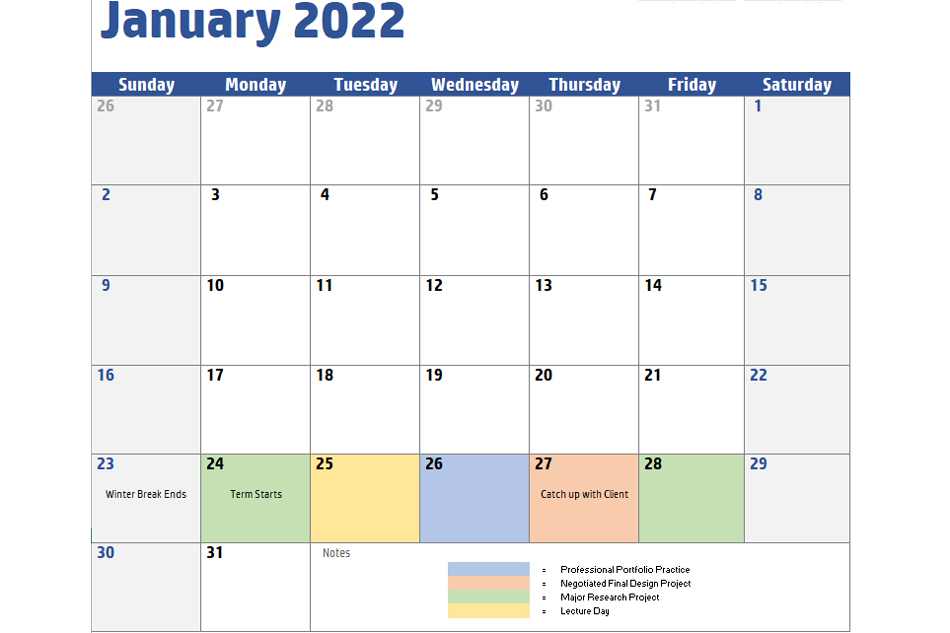
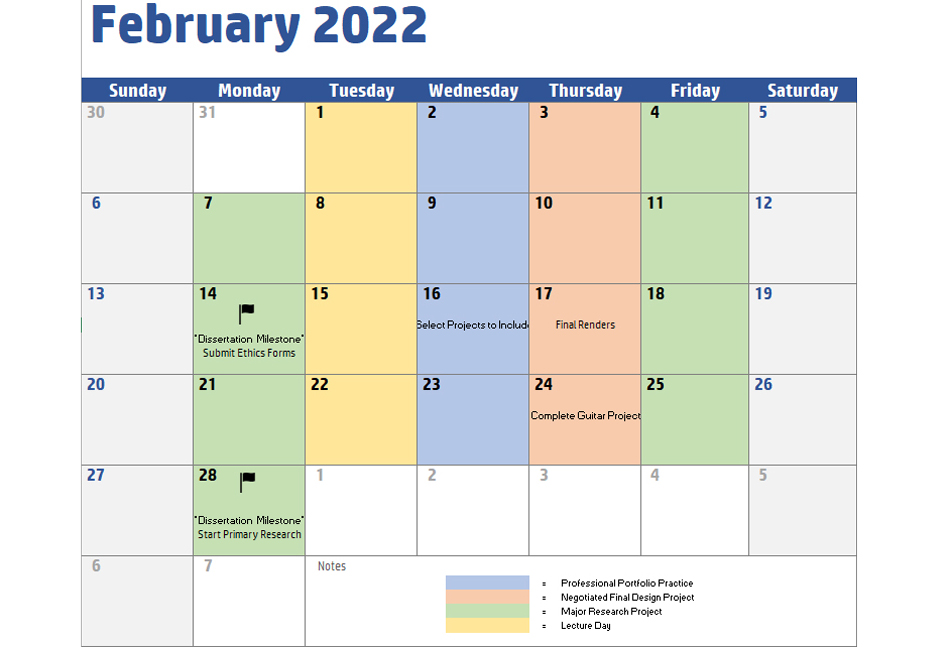
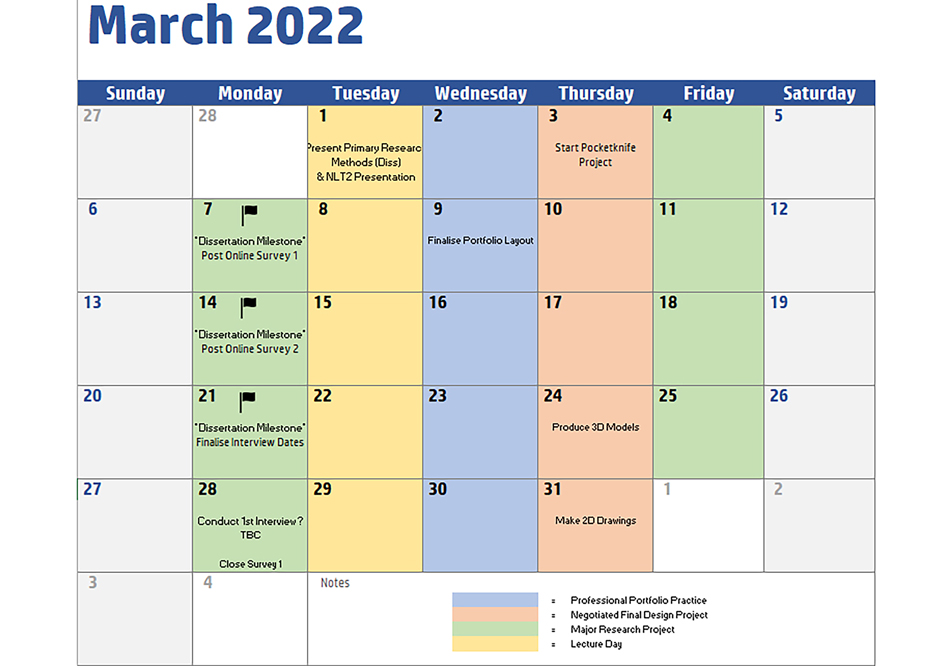

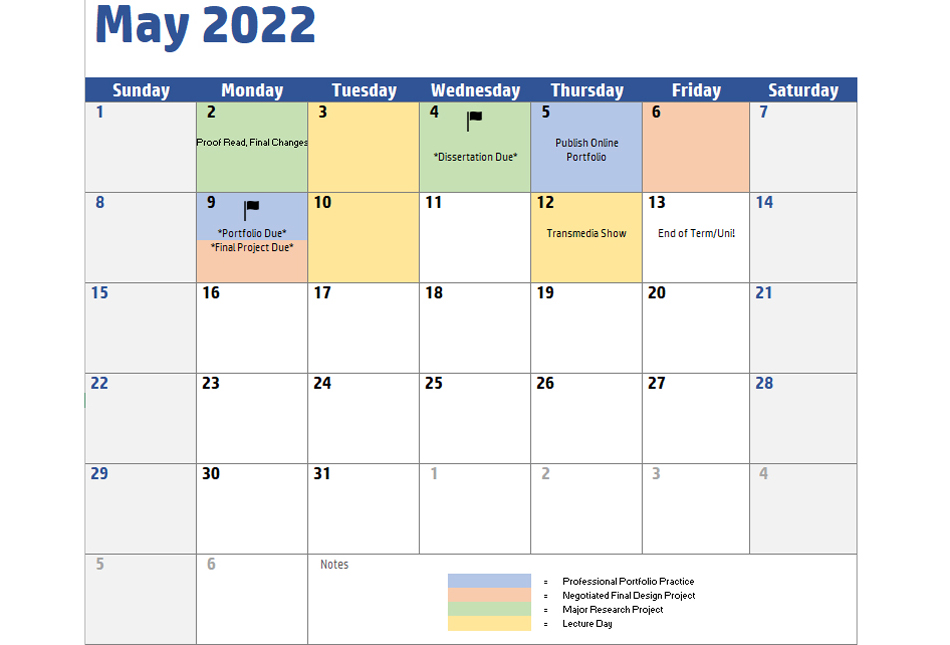
As for the dissertation itself, the big focus was on collecting primary research to supplement the semester one research. This was especially important since my topic was so niche; there were many significant gaps in current academic knowledge and very little that related directly to the UK. In order to find the information that I needed, I had planned to interview two relevant parties (the police and a technology company), and conduct two surveys via online questionnaires. The first survey was aimed at the general public, and was designed to determine what the average person thinks about 3D printing and the threats it could pose. The response to this survey was great, thanks in part to my friends and family who shared it around. 59 responses were received, which was within my target range. The second survey was designed for owners and users of 3D printers, which was a much smaller group and therefore far fewer responses were received. I found sharing this survey in different social media groups challenging since many of them had rules preventing people posting surveys – I could have pushed for more responses, but felt awkward posting my survey in groups that clearly didn’t want to be involved. To be honest, I feel the same when I see others post surveys in the groups I’m in, so perhaps there was a different approach that should have been attempted, such as dedicated survey-sharing groups or websites.
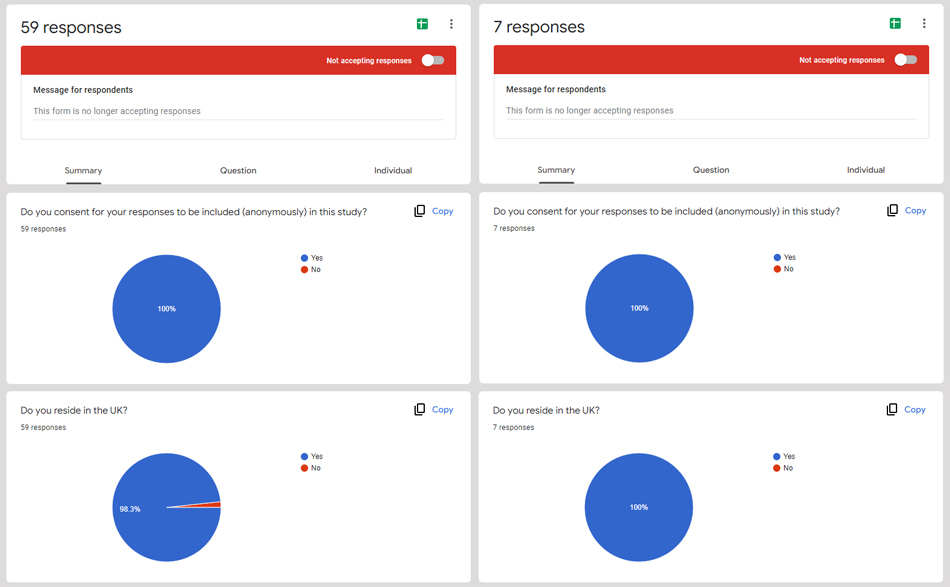
As for the two planned interviews, the outcomes could not have been more different. To start with the positive, I successfully conducted an interview with a police Intelligence Officer via email. This was of huge importance to my research because they were able to provide data that I simply could not obtain anywhere else, such as up-to-date info on the types of 3D-printed guns recovered by police. This was the biggest success to come out of the whole module in my opinion, and it elevated my study above a typical questionnaire/survey analysis paper. Unfortunately, the interview with an industry professional did not end up happening; a few days before the planned video call date he stopped communicating with me altogether. While this didn’t have a huge impact on my research – I had a contingency plan in place – it was frustrating, and left me with some unanswered questions. I did learn a valuable lesson, which is that the success of a project should not rely heavily on one person, especially somebody like an industry processional who is unlikely to be committed to helping. If I could do this process again, I would have a backup contact to default to in the event that the primary interviewee decided not to participate. It certainly emphasised the importance of having a backup plan. You can see the Intelligence Officer’s responses below.
